MMC4
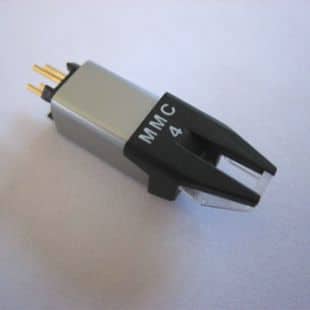
This could be regarded as the standard cartridge in the range and was fitted to many decks as standard.
In many ways a replacement for the MMC20E, it offered good performance at a most reasonable price

This could be regarded as the standard cartridge in the range and was fitted to many decks as standard.
In many ways a replacement for the MMC20E, it offered good performance at a most reasonable price
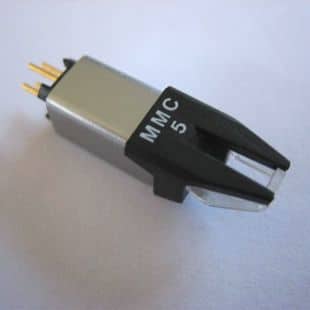
The most basic of the range, this cartridge was available to be specified for those decks not fitted with a cartridge as standard such as the Beogram RX.
It could be differentiated by its cantilever which was a straight non tapered aluminium tube.
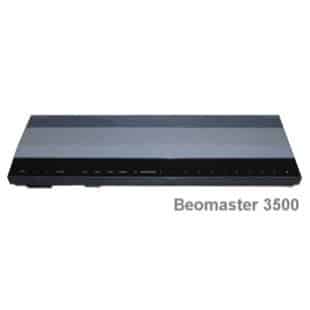
Beomaster 3500 was a part of Beosystem 3500 which comprised the Beomaster 3500 receiver, Beogram 3500 CD player, Beocord 3500 cassette recorder, a pair of Beovox RL35 speakers and a Beolink 1000 remote control.
The whole system in the autumn of 1991 cost just 1600 euros (about £1100). The system’s lines were pure with everything superfluous omitted. It was specially designed to hang either on a wall or sit on a shelf or table. A light touch on its illuminated display gave immediate access to AM/FM receiver, CD player and cassette recorder; all of which were the latest and best in their respective fields. The system was completed by a pair of RedLine RL 35 speakers and operated via a Beolink 1000 remote control unit.
The system was similar to Beosystem 4500 but had a matt finish on the top panels as opposed to Beosystem 4500’s shiny panels. The electronics were a cut-down version of its more expensive brother.
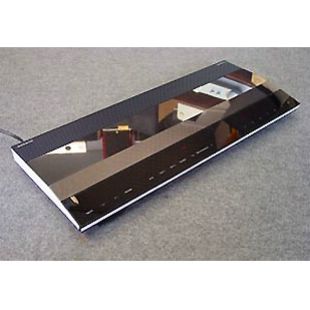
The Beomaster 4500 radio/amplifier received both FM and AM radio and was your communication link to the other sound sources in the system. Its operation was simplicity itself with an illuminated menu presenting all the options available. 20 radio stations could be pre-set providing you with instant access together with automatic fine tuning.
The 2 x 55 watt/8 ohm amplifier had a newly-developed, well-balanced interplay with the power supply which gave the output extra strength. The power reserve encompassed the entire frequency range and gave stable sound quality no matter what the volume. Beomaster 4500 also had automatic power handling control that prevented overloading, no matter how many loudspeakers were connected, as well as a special loudspeaker socket which ensured optimal utilisation of BeoLab active loudspeakers.
Beomaster 4500 could be used as part of the Beosystem 4500 hi-fi system and could be controlled via a Beolink 1000 remote control terminal. Later models of Beomaster 4500 could be controlled by the two-way Beolink 5000 and had the extra benefit of programmable timer functions (note that only Beomaster 4500 models with a software version of 2.1 and higher were able to handle two-way communication as well as the timer function.)
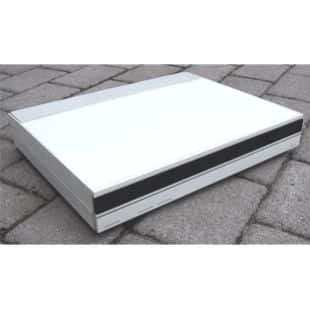
The Beomaster 6500 receiver was the brains behind the sound system.
In part a powerful receiver for FM/AM and LW broadcast bands. In part the control centre that created the connection between your commands and all the sound sources in Beosystem 6500. You could preset up to 20 stations and a light touch on the Master Control Panel automatically initiated the search and fine tuning functions.
2 x 110 watts/8 ohms output gave you a power surplus that provided a detailed sound picture even at low volume. The receiver also had Bang & Olufsen’s automatic power handling control that prevented overloading no matter how many loudspeakers you connected. It also had a newly-designed socket which provided optimal utilisation of BeoLab speakers.
Beomaster 6500 could be used as part of the Beosystem 6500 hi-fi system and could be controlled with with the Master Control Panel 6500 or Beolink 7000.
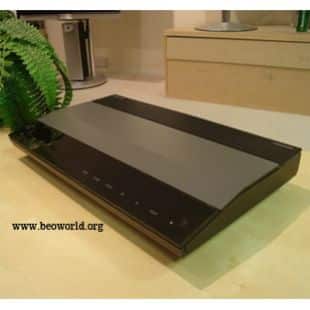
The sound reproduction achieved by Bang & Olufsen’s CD 3500 CD player was truly outstanding. It played both 12cm and 8cm compact discs and had an ingenious ‘step’ function which allowed you to go straight to a chose track selected from anywhere on the disc. The CD player was one of the most technologically-advanced pieces of hi-fi on the market at the time and yet was one of the easiest to operate. The explicit display always indicated what the CD player was doing all the time – for example, which track was being played, and how many tracks there were on the played compact disc.
Beogram CD 3500 could be used as part of the Beosystem 3500 hi-fi system.
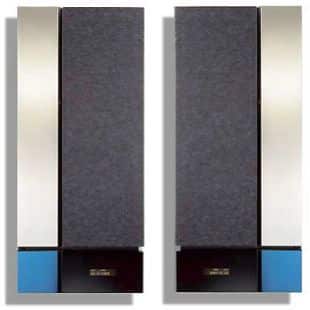
Bang & Olufsen’s BeoLab and Beovox 5000 / 3000 speakers had both the voice and the looks for a leading, acoustic role. And because of their looks, they were known as Bang & Olufsen’s range of panel loudspeakers. Panel loudspeakers were one of the most exciting and interesting examples of how Bang & Olufsen united advanced technology and stunning design to achieve totally new effects.
They may not have looked like high-specification loudspeakers – more like works of art – but their sound immediately gave them away. Even at full volume, they kept the total sound picture in perfect balance.
Design as a work of art
The elegant, flat panel loudspeakers were created to hang on the wall. And with their calm surfaces of blue or grey fabric coupled with polished steel, they could be taken for works of art. But the design was only partly for visual effect. The form of the panel speakers was founded on an advanced, acoustic principle that uses the wall as an active part of the sound reproduction process – without causing the wall itself to vibrate.
Optional display and amplifier
The panel loudspeakers were available in two sizes – each with or without amplifier and a display showing which source was playing and at what volume. Also it told you which track number on a CD or tape you were listening to. With display and amplifier the loudspeakers were called BeoLab. Without, they were called Beovox. The option depended upon which Bang & Olufsen sound system was connected. BeoLab speakers were designed to match Beosystem 6500, 4500, 3500 and Beocenter 9500 and 8500.
Why build amplifiers into the loudspeakers instead of keeping them separate?
Because you can reduce the size of the cabinet volume to one-third of the size of a conventional loudspeaker with the same sound capacity. The principle is called Active Loudspeakers, and what you get is a compact loudspeaker that can play at high volume without distortion or damage to its drive units. Furthermore, when amplifier, treble and bass units are paired for the same task, they can be tailored to compensate for each other’s shortcomings. What you hear is music that sounds exactly like the instrument it originally came from.
Mounting Options
Wall mounting brackets were supplied with this model. No other mounting solution wall offered.
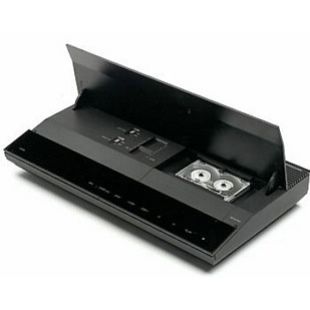
Beocord 3500 was part of Beosystem 3500, a budget-priced system for those who wanted to get onto the Bang & Olufsen bandwagon but could not afford, or did not want to have, the extra features that say, Beosystem 4500 had to offer.
It included specifications such as Dolby B Noise Reduction and a Sendust head for longer life of the recording/playback head, otherwise the features were identical to the Beocord 4500. Its only difference was the grey finish instead of its more expensive brother’s polished surfaces.
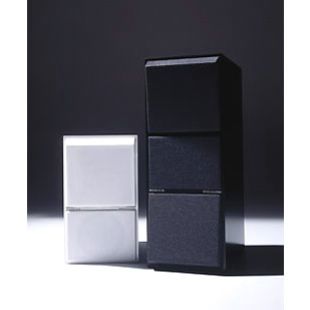
Living proof that big sound need not take up more space than a couple of ring binders, Beovox CX50 snuggled in anywhere, even as extras in a Beolink® system.
Beovox CX50 and Beovox CX100 loudspeakers were the smallest loudspeakers from Bang & Olufsen up to the time that the manufacture of passive speakers ceased in 2002. They were mostly used to place within a passive Beolink® system (MCL), although they could also be used as main speakers. Thanks to different colour combinations they blended well into most people’s décor.
Beovox CX100 finally ceased production in September 2003 – the last of a long and successful line of passive speakers.
Description:
Passive loudspeaker, aluminium cabinet, available in black, white and brushed aluminium.
Replacement drive units: Top drive unit for CX50/CX100 Part number: 411743
Mounting Options
BeoVox CX50/CX100 replaced C40 and was designed to be optionally mounted with the wall brackets supplied in the box.
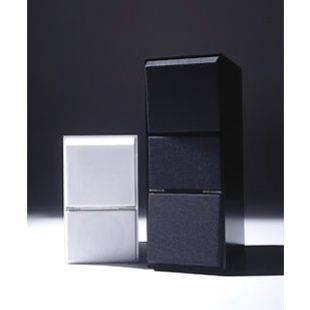
Living proof that big sound need not take up more space than a couple of ring binders, Beovox CX50 snuggled in anywhere, even as extras in a Beolink® system.
Beovox CX50 and Beovox CX100 loudspeakers were the smallest loudspeakers from Bang & Olufsen up to the time that the manufacture of passive speakers ceased in 2002. They were mostly used to place within a passive Beolink® system (MCL), although they could also be used as main speakers. Thanks to different colour combinations they blended well into most people’s décor.
Beovox CX100 finally ceased production in September 2003 – the last of a long and successful line of passive speakers.
Description:
Passive loudspeaker, aluminium cabinet, available in black, white and brushed aluminium.
Replacement drive units: Top drive unit for CX50/CX100 Part number: 411743
Mounting Options
BeoVox CX50/CX100 replaced C40 and was designed to be optionally mounted with the wall brackets supplied in the box.